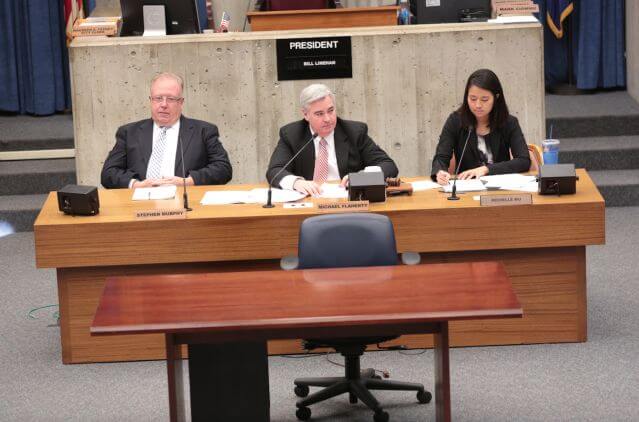Fertilized with support from a growing community, and incubated in the ethos of new age locavores and agriculturalists, urban chicken culture is hatching in Boston.
In a pivot from Boston’s anti-farm-animals-in-the-city stance of the past half-century, the Hub has become more open to the concept of hens in backyards. More and more, urbanites are raising flocks of feathered pets and collecting pile of fresh eggs for breakfast, just steps from the bustle of city life. “A lot of people are starting to take more of a look at chicken-keeping and bee-keeping as the next step in the sort of full-circle urban gardening cycle,” said Augusta Nichols-Even, marketing director for Green City Growers, an urban farming supplies dealer in Somerville. At a recent Chicken-Keeping 101 class inside the GCG office, poultry expert Khrysti Smyth walked a group of aspiring farmers through proper nutrition, spotting and treating illnesses and picking the right breed – some are best for meat, some for eggs, some varieties look like Foghorn Leghorn, others like tiny velociraptors or puffy balls of splotchy cotton. A backyard chicken farmer of six years, Smyth offers classes, consultations and coop-building services. Her work has earned her the title “Chickeness of Somerville.”
“One way of looking at it is I’m a backyard chicken concierge,” Smyth said.
The venture, Smyth said, has been much more successful than a past service she offered giving consultations on green living. People didn’t want tips on composting, she said, they wanted help with hens. Domesticated birds can be as easy to get along with as dogs or cats, she said, and with proper training, raising a flock is about as difficult as raising a guinea pig.
There is a lot that can go wrong for a first-time urban chicken farmer. Chickens are hardy creatures, and can survive New England weather, but an improperly built coop – be it too drafty or too stifling – can kill a flock, Smyth said. Without security measures, the birds can become prey to hawks, dogs, cats or raccoons, or end up sharing their coop with rats and other pests. Improperly installed heating lamps, widely considered unnecessary anyway, can catch fire and burn hens alive. The risks have brought many new chicken-owners to Smyth with questions – sometimes they call her on her cellphone for quick words of advice, which can keep them from losing birds to the city’s creatures and elements. “It’s a live animal, so the stakes are higher,” she said.
In Somerville, chicken-keeping is regulated, but legal, since a landmark ordinance was adopted there in 2012. But aspiring chicken owners face other challenges in Boston.
In most of the city, raising chickens is banned in zoning. A few areas do allow it, among them parts of Chinatown, South Boston and Allston/Brighton.
There are many ways around the restrictions. A man in West Roxbury this spring was the first to successfully petition the Zoning Board of Appeals for a variance allowing him to keep a six-chicken coop in his backyard. Or amateur farmers can operate under-the-radar, quietly keeping chickens as long as neighbors don’t complain — or don’t know. There are chickens being kept just about everywhere in Boston, Smyth said. AndInspectors, she said, aren’t hunting for “renegade chickens.”
A Boston zoning ordinance called Article 89, adopted in 2013, gave official support for produce growers, but restrictions on livestock-raising remain on the books in most neighborhoods. That could change, said Mary Mercurio, senior planner for the Boston Redevelopment Authority.
Some activists are starting to push for change, she said, and a BRA hand-out from the Citywide Urban Agriculture Rezoning Initiative offers step-by-step instructions for groups looking to petition for zoning amendments in their neighborhoods. “The future is wide open,” Mercurio said. “There is something new around every corner with urban agriculture and it’s going to be interesting to see one or two years from now what’s popping up.”
Growing flock of Bostonians embrace urban chicken-rearing

NICOLAUS CZARNECKI/METRO
























